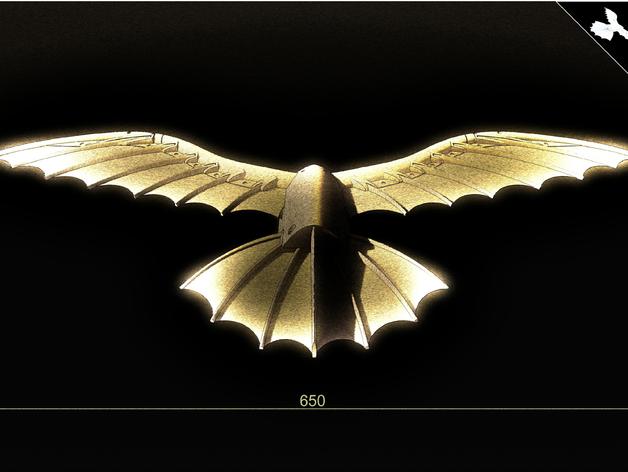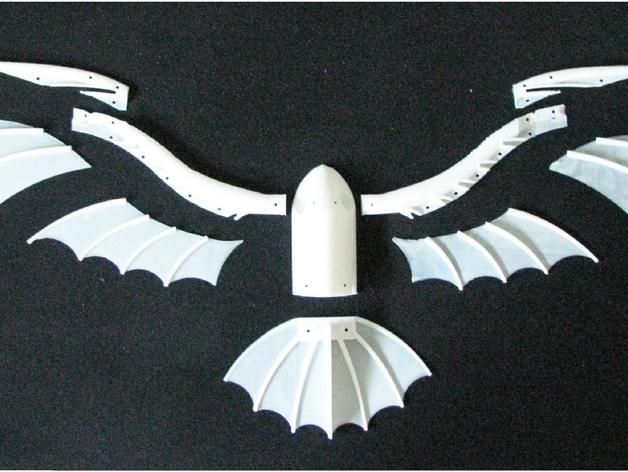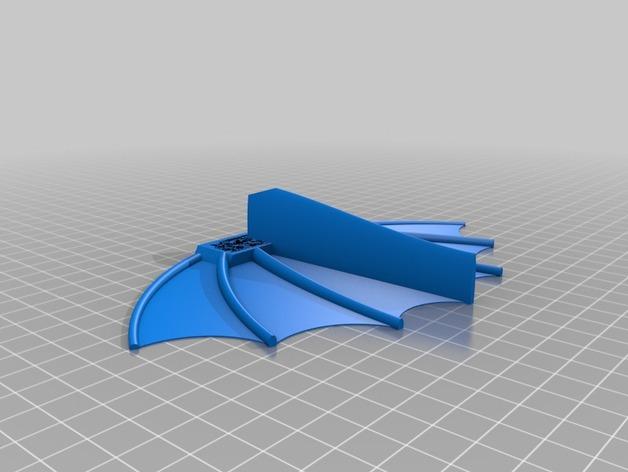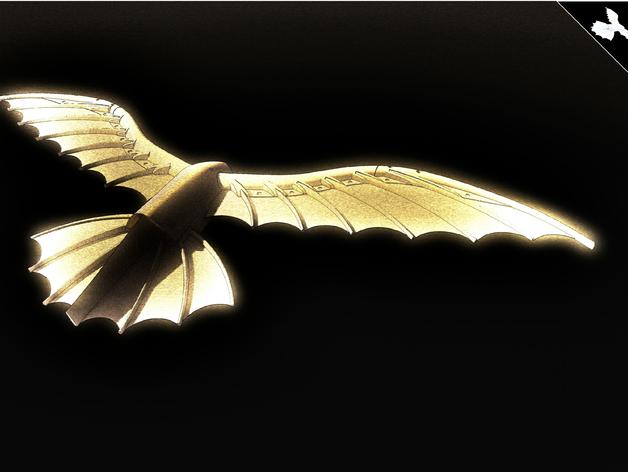 There’s a first time for everything and for Croatian Thingiverse contributor Matija Sedak, that first time was the contribution of a DaVinci-inspired 3D printed flying machine. There’s nothing like standing on the shoulders of giants to help successfully address a challenge such as Thingiverse’s #CatchTheWind call. After all, DaVinci looked to one of the greatest designers ever for his inspiration when he examined the wings of the bat.
There’s a first time for everything and for Croatian Thingiverse contributor Matija Sedak, that first time was the contribution of a DaVinci-inspired 3D printed flying machine. There’s nothing like standing on the shoulders of giants to help successfully address a challenge such as Thingiverse’s #CatchTheWind call. After all, DaVinci looked to one of the greatest designers ever for his inspiration when he examined the wings of the bat.
The pointed ends of the wings themselves immediately point to his source of inspiration as does the membrane and rib structure that he envisioned created from pine and raw silk. The wings of the flying machine, 33 feet across, were designed to twist as they flapped, a lesson in flight learned from close observation of the nocturnal winged mammal.
 Despite the genius of DaVinci’s design, it required far more human power than was possible in order to get the contraption off the ground and, you may have noticed, we do not use flapping flying machines as a means for travel. What Sedak was interested in was not transporting a human through the air, but rather in using 3D printing as a mechanism for creating a small version of DaVinci’s beautiful design. Seeing the Thingiverse challenge in the same week that he saw a poster for the DaVinci exhibit in Zagreb, the connection seemed obvious. Sedak explained his process:
Despite the genius of DaVinci’s design, it required far more human power than was possible in order to get the contraption off the ground and, you may have noticed, we do not use flapping flying machines as a means for travel. What Sedak was interested in was not transporting a human through the air, but rather in using 3D printing as a mechanism for creating a small version of DaVinci’s beautiful design. Seeing the Thingiverse challenge in the same week that he saw a poster for the DaVinci exhibit in Zagreb, the connection seemed obvious. Sedak explained his process:
“To start, I used AutoCAD to draw the base lines of the ribs and the body of the kite. After that, I imported 2D drawings into Rhino and started making ribs that have more height than width for balance in the air. After I made sure that all of the pieces could be printed, I started to print it, piece by piece redesigning the model as the defects became apparent. Printing was done my Prusa i3 and with an average speed of 40mm/s the printing lasted around 11 hours in total.”
 Currently, the mini-machine is held together with M3 nuts and bolts, but Sedak is working on creating a version that would be fixed together without the need for nuts and bolts. Part of this would be made possible by printing it in fewer pieces, something that would require a larger delta printer.
Currently, the mini-machine is held together with M3 nuts and bolts, but Sedak is working on creating a version that would be fixed together without the need for nuts and bolts. Part of this would be made possible by printing it in fewer pieces, something that would require a larger delta printer.
This is not just a shelf model, created for looks only, but can actually fly. Sedak promises that a video in which he flies the kite will be available shortly.
“To fly it you only need some nylon thread or something similar. You put the thread through the hole in the bottom of the kite’s body. If you want to have additional control of your kite you can put additional threads on the left and right ribs at the place where the wings are secured to the ribs with M3 bolts. Currently I am also working on a few add-ons for the kite, such as handle that could wind up the threads. At the right circumstances it flies, but without additional threads it can be hard to control.”
 The commitment to continued improvement of a design bodes well for Sadek’s future as a maker and once he graduates from the architecture program at the University of Zagreb. A true designer realizes that nothing is ever perfect and is humble enough to admit (if only to him/herself) that there is always something that can be done to improve upon a creation.
The commitment to continued improvement of a design bodes well for Sadek’s future as a maker and once he graduates from the architecture program at the University of Zagreb. A true designer realizes that nothing is ever perfect and is humble enough to admit (if only to him/herself) that there is always something that can be done to improve upon a creation.
As this is Sedak’s first contribution, I can’t wait to see what continued efforts bring. Let us know if you’ll be flying your own 3D printed contraption in the 3D Printed DaVinci-Inspired Flying Machine forum thread over at 3DPB.com.
Subscribe to Our Email Newsletter
Stay up-to-date on all the latest news from the 3D printing industry and receive information and offers from third party vendors.
You May Also Like
3D Printing Unpeeled: New Arkema Material for HP, Saddle and Macro MEMS
A new Arkema material for MJF is said to reduce costs per part by up to 25% and have an 85% reusability ratio. HP 3D HR PA 12 S has been...
3D Printing News Briefs, January 20, 2024: FDM, LPBF, Underwater 3D Printer, Racing, & More
We’re starting off with a process certification in today’s 3D Printing News Briefs, and then moving on to research about solute trapping, laser powder bed fusion, and then moving on...
3D Printing Webinar and Event Roundup: December 3, 2023
We’ve got plenty of events and webinars coming up for you this week! Quickparts is having a Manufacturing Roadshow, America Makes is holding a Member Town Hall, Stratafest makes two...
Formnext 2023 Day Three: Slam Dunk
I’m high—high on trade show. I’ve met numerous new faces and reconnected with old friends, creating an absolutely wonderful atmosphere. The excitement is palpable over several emerging developments. The high...
































